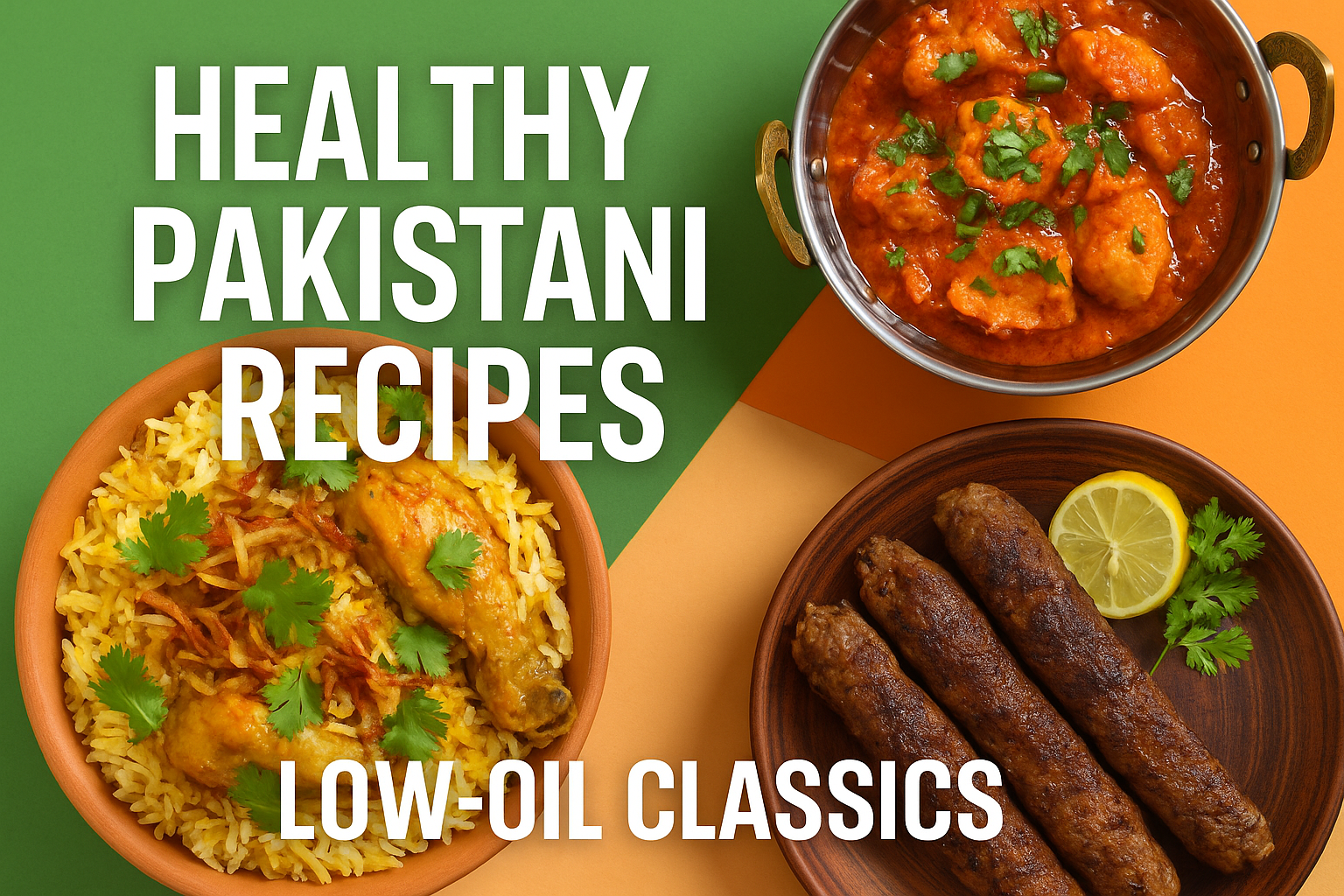In part one of this series I shared the dietary guidance from four randomized controlled trials that found significant improvements in cardiovascular outcomes in people following a Mediterranean dietary pattern (MedDP). Not just improvements in risk factors like blood sugars or cholesterol, but actually fewer heart attacks and other major cardiac events. We love to see that.
In this post I’ll share 21 practical steps you can take to follow the MedDP even when it’s snowing where you live. Even if the ocean is a two-day drive away. We can do this!
There’s a lot, so if you prefer, skip to the section you most want to work on.
Use more extra virgin olive oil than you think

Like other liquid oils, extra virgin olive oil (EVOO) can help lower your LDL (bad) cholesterol and triglycerides, thanks to healthy monounsaturated fats. What makes it special are natural compounds such as polyphenols that have antioxidant and anti-inflammatory properties, helping to protect blood vessels from damage.
Because EVOO is produced without heat, those unique plant compounds are preserved for your health and enjoyment. Despite what you may have heard, it’s fine to cook with it.
If you’re like me and grew up in the low-fat era, you might still be cautious with calorie-dense oils. But curiously, a diet enriched with olive oil was found to support a small degree of weight loss in a 2018 meta-analysis of randomized controlled trials.
Still, the idea is to have more of the foods in this post, like EVOO, and less butter, sweetened beverages, ect., so the calories should balance themselves out.
Recall from part one that participants in the PREDIMED study, which demonstrated a 30% reduction in major cardiovascular events, were asked to have 4 tablespoons (!) of extra virgin olive oil a day. CORDIOPREV too. How to get there:
- Start with a good EVOO. If you’re not sure how to pick one, see this guide from Consumer Reports. Their “best” products may not all be available at your local store, but the shopping and storage tips are helpful either way. Or go to an olive oil specialty retailer and taste test. (You can cook with a less costly EVOO if you want to save money.)
- Drizzle that baby on everything. Okay maybe not everything, but ask yourself, would this be improved if I finish it with my good EVOO? Broiled fish, grilled seafood or chicken, roasted vegetables? Whole grains like farro or barley? A bean or quinoa salad? Soup? You might have already used EVOO to make the dish, but a little more on top adds a bold, fresh flavour and a touch of richness.
- Learn to make salad dressing with your nice EVOO. Whipping up a vinaigrette is easier than you might think. Make enough for a week or two and keep it in a jar in the fridge. (The olive oil will solidify in the fridge and look dodgy, but it’ll be fine after a few minutes at room temperature.)
Make vegetables the star

What did all of the study protocols have in common, not to mention just about every other diet studied for heart health? The very exciting (actually!) and hugely beneficial vegetables. I fear that our current obsession with protein (also important) may be leaving poor humble vegetables in the dust.
How much do you need? I’ll reference the PREDIMED study most, because it’s the biggest, and they shared specific guidance. As I summarized in part one, they asked for at least two cups of vegetables (“some cooked, some raw”).

That, and tons of other research, is why you so often see these meal planning guides with half of the plate fruit and vegetables. It’s just simpler than fussing with all those cups and servings. But don’t worry about every meal being exactly half, if that’s not realistic for you. Getting any fruit or veg in the mix is a win.
We can do so much more with vegetables than people do, from roasting spaghetti squash to grilling portobello mushrooms. Salads can incorporate ribbons of Swiss chard or peppery arugula.
But if you’re struggling with this one, here are a few simple things to try:
- Pick up raw veggies whenever you shop. That way you’ve always got a fresh, crunchy vegetable with little prep required: Slices of tomato with your eggs, baby carrots with hummus, a bag of snap peas at your desk, wedges of bell pepper at the dinner table.
- Practice roasting vegetables to go with dinner. They’re delicious roasted, and once you have the hang of it, it’s a cinch. Everything from mushrooms to potatoes to broccoli, eggplant, zucchini, and more tastes sweeter and crispier when roasted. Drizzle that good EVOO over them before serving for a luxurious touch.
- Keep a variety of frozen vegetables on hand. Frozen vegetables are the best! They’re flash frozen at the peak of freshness. You don’t have to wash or chop them. They won’t get slimy if you forget about them. You can stock up when they’re on sale. They work in pasta, eggs, soup, chili and more.
Frozen stir-fry blends are more creative combinations than the “mixed vegetables” of yesteryear. Something like this or this can help you whip up a quick meal even if you’re overdue for a grocery run. This Peanut Tofu uses frozen vegetables and comes together quickly on a weeknight. (Substitute chicken if needed.)
And don’t overlook frozen peas, which are especially fibre-rich and even have a little protein. They taste fresh and sweet if you cook them for just a couple of minutes. Combine with rice or frozen corn for a family-pleasing no-brainer side dish.
Have fruit with meals and as a snack

PREDIMED participants ate three servings of fruit per day, consistent with evidence that even people with type 2 diabetes who get three or more servings of fruit a day are less likely to have cardiovascular disease. Yes, fruit even with diabetes.
But I often see people eating less fruit than this. Why? Some are worried about sugar, which isn’t necessary, at least for fresh and frozen fruit. They do contain sugar, but also fibre and similar nutrients to vegetables. (The sugars are more concentrated in dried and juiced fruit, so go easy on those if you have type 2 diabetes.)
How to make all that fruit eating happen?
- Buy apples by the bag. An apple a day… it’s true! Well not literally, but regular consumption has been credited with cholesterol lowering, and apples are full of antioxidants such as flavonoids, which help combat oxidative stress and inflammation in blood vessels.
Apples are amazing! If you store them in the crisper drawer of your fridge, they’ll last for three weeks or more. You can easily take them on the go, and you can buy apples grown relatively close to home most of the year. If you get tired of raw apples, you can cook them for a light dessert or oatmeal topping.
- Keep frozen blueberries on hand. Fresh fruit looking dodgy in February? As with frozen vegetables, frozen fruit are a marvel of food processing. (It’s not all bad!) Microwave a half-cup of blueberries for 20-30 seconds and they’ll be ready for your yogurt or oatmeal. Or nibble on them frozen. Regular, moderate intake of blueberries is associated with reduced risk of heart disease, death, and type 2 diabetes.
- Stock up on canned pears and other fruit in juice. Pears (and oranges) are good sources of soluble fibre, so if cholesterol or blood sugar control are priorities for you, they have the edge. But really, all canned fruit brings something to the table, and it makes a tasty, simple dessert when you’re craving something sweet.
Work towards legumes three times a week

Legumes, including dried beans, lentils, and peas, also called pulses, play a prominent role in various Mediterranean cuisines. Some of the most well-known in North America: Hummus and falafel (chickpeas), minestrone and other soups, and pasta e fagioli, an Italian dish usually made with cannellini or other white beans.
Whether you want one of these classic Mediterranean dishes or a bean dish from another culture (hello Mexico!), the heart-friendly nutrients will be there: Soluble fibre, plant protein, potassium, magnesium and more. And don’t forget soybeans (edamame) and tofu.
The goal is to have a 3/4 cup serving of legumes three times a week, so this might be a tough one, but it is definitely doable, even for non-vegetarians. Build up slowly.
Not sure you want to eat 3/4 cup of beans? That’s okay. It’s actually good to start small, to allow your gut to adjust. Down the road when you’ve got some good recipes in your go-to collection, you can start to have more legumes and less meat.
Here are some ways I’ve seen even people here in Alberta do this:
- Make pot of chili, soup, or stew and freeze any leftovers. Use single-serving containers and lunch will be taken care of ready on a busy day down the road. If your family gives the thumbs down to beans, peas, and lentils, you can lean on those leftovers instead of trying to force it into dinner three times a week.
- Embrace Taco Tuesdays. Designating a theme for a weekday makes meal planning easier and Taco Tuesday gives you a fun and family-friendly way to get beans in the mix. Whether you keep it vegetarian or include some ground turkey, a can of pinto or black beans is an easy addition to this quick meal.
- Add a few chickpeas or kidney beans when you have a green salad. Won’t use the whole can? You can store leftovers in the fridge for 3-4 days or toss them in the freezer instead. If you freeze them flat in a freezer bag, later on you can take out just a few at a time.
Fish too, if you can

This is one of the hardest Mediterranean diet habits for land-locked meat and potatoes people. You might not sure when a piece of fish is done but not overdone. You might be allergic. It’s just so… fishy.
But if you can, experiment and practice some fish recipes that sound good to you, and hopefully you’ll get more comfortable with it.
How often? Heart health guidelines usually suggest fish twice a week, but in the PREDIMED study they asked participants to have 3+ weekly servings of “fish or seafood, at least one of which is fatty fish”. (A serving was 100-150g / 3.5-5 oz of fish or 200g / 7 oz of shellfish.) They weren’t messing around.
Don’t worry, this isn’t an all or nothing game. If once a week is all you can do, then do that. One is better than zero. If you can’t do fish at all, just focus on getting more of the other MedDP foods.
Should you take an omega-3 / fish oil supplement?
Unfortunately, research into this has produced conflicting results. A 2018 meta-analysis of ten studies concluded that fish oil / omega-3 supplements don’t reduce the rate of cardiovascular events, while a similar paper in 2019 came to the opposite conclusion!
Omega-3 supplements are no longer recommended in the Canadian Cardiovascular Society’s guidelines, as of 2021. The American Heart Association, on the other hand, is still supportive of their use. Talk to your doctor about whether they might be helpful in your situation.
In the meantime, if you want some easy ways to get more fish:
- Pick a day every week that you’ll cook a fatty fish like salmon or trout. Maybe it’s Friday, like in many cultures. Maybe it’s right after your usual shopping day, so the fish is fresh. If you can build this into your routine, it’s much more likely to happen, and it makes meal planning easier too.
- When you cook fish, make extra. We’re aiming for at least three servings a week, but that doesn’t mean you have to make fish three times a week. At 100-150 grams (3.5-5 oz), a serving is pretty small, about the size of a deck of cards. Many people will have twice that when they make salmon.
And/or you can plan to have extra fish the next day. Salmon is delicious with eggs, in a sandwich, or flaked into pasta with some roasted (or frozen) vegetables. Either way, you’ll have knocked out two “servings” by cooking once. (Plan to eat it the next day so it’s as fresh as possible. Most leftovers can go three days or more, but not fish.)
- Pull out a can of fish once a week. Canned tuna, salmon, sardines, and mackerel are convenient and versatile. Maybe this solves lunch on weekends? Beyond sandwiches, you can add them to pasta, salads, fishcakes, or if you’re feeling fancy, risotto. Canned fish is usually more affordable and sustainable too.
Honestly, I only make fish once a week, but I make lots. We have tuna melts on sprouted grain bread or mackerel fish cakes regularly. (The kids like them!) I add frozen shrimp to dinner occasionally when I need an easy protein. Three servings of fish might be easier than you think.
Have more white than red and processed meat

For the average Canadian or American, this could mean a big change, although I find that many people who are interested in heart health are already trading much of yesterday’s beef, bacon, and sausage for chicken and turkey.
With the PREDIMED and CORDIOPREV studies suggesting less than a serving a week, here are two practical steps you can take to have the most impact and convenience:
- Find alternatives to lunch meat for sandwiches. Ham, roast beef, even turkey sandwich meat is considered “processed meat,” a category the World Health Organization has defined as “meat that has been transformed through salting, curing, fermentation, smoking, or other processes”. Regular consumption has been linked to colorectal cancer, diabetes and heart disease, but you can find 7 heart-healthier sandwich alternatives here on my blog.
- Stock up on ground turkey. It absorbs seasoning well and works in various dishes: pasta sauce, chili, tacos, even burgers. To make it taste more like beef, think (healthy) fat, umami (savoury deliciousness), and seasonings that mimic beef’s richness. Healthy fat usually means cook it generously in olive oil. Umami can come from Worcestershire sauce, tomato paste, or dried mushrooms. For rich seasonings, experiment with beef broth, garlic & onion powder, smoked paprika, cumin, and/or black pepper & salt.
Enjoy nuts and seeds daily

People don’t usually have much trouble with this. PREDIMED asked for nuts at least three times a week, but other evidence suggests that every day would be even better. If you’re like most people and you like them, why not make it a daily habit? (If cost is a concern, here’s a nut and seed price comparison I did a few years ago.)
Are you worried that you’ll overeat the nuts? Just like with the olive oil, don’t be. Three large US cohort studies found that increasing nut intake by 0.5 servings/day was associated with less weight gain over 4-year intervals. Other studies have come to similar conclusions.
It appears that we don’t absorb all of the fat, nuts help us feel full, and digesting them may even burn a few calories!
How can you build more nuts and seeds into your routine?
- Bring them when you’re on the go. You can buy snack-sized bags or make up little containers yourself. They’ll keep for a few months in the car, depending on how hot it gets. If allergies are a concern, seeds have similar nutrition, and pumpkin and sunflower seeds are relatively inexpensive.
- Add nuts to salads and stir-fries. Chopped cashews and mango (even from frozen) add a surprise touch of sweetness and crunch to a stir-fry. Or add sliced almonds to a salad after toasting them in a pan for 2-3 minutes. For most nuts and seeds, toasting (or roasting) really makes a difference, enhancing the nutty flavour.
We’ve got this one, right?
Try your hand at sofrito

This sounds mysterious, but chances are you’ve made it without calling it sofrito. As I discussed in part one, PREDIMED researchers in Spain defined sofrito as “sauce made with tomato and onion, leek, or garlic, simmered with olive oil”. Sound familiar? If you’ve made homemade red pasta sauce or tomato-based soup, you’ve probably done this.
PREDIMED participants were asked to use sofrito at least twice a week to season “vegetables, pasta, rice, or other dishes.” Here’s how to you can get started:
- Try my simple sofrito recipes. There’s one in my 30-Minute Heart Healthy cookbook (Sofrito Cod Stew, page 110). (You can substitute any fish you like.) Or try the sofrito and lentil variation here on the blog. The generous amount of EVOO makes the tomato, onion, bell pepper, and garlic sing. Trust me, it’s delicious.
- Make homemade spaghetti sauce. If you love pasta, this one is easy! Once you land on a recipe you like, you can cook extra and freeze it. Canned tomatoes work (ideally no-salt-added), so it doesn’t have to be a full-day project.
So which one do you want to focus on?
Once again, here are the foods to get more of on the MedDP, at least as it’s been studied for heart health:
How are you doing? Closer than you thought? Or would you like to make some changes?
If so, just focus on one at a time. Small changes you can sustain will take you further in the long run than a wholesale makeover. At some point life will inevitably throw you for a loop, and if these habits are solidly part of your routine, you’ll be able to hold onto them, even amidst the chaos.
For ongoing support and community, you’re welcome to join the conversation in my Facebook group, the Sweet Spot Heart-Healthy Cooking Club. I’d love to hear what you’re working on and support you in making it happen. ❤️









